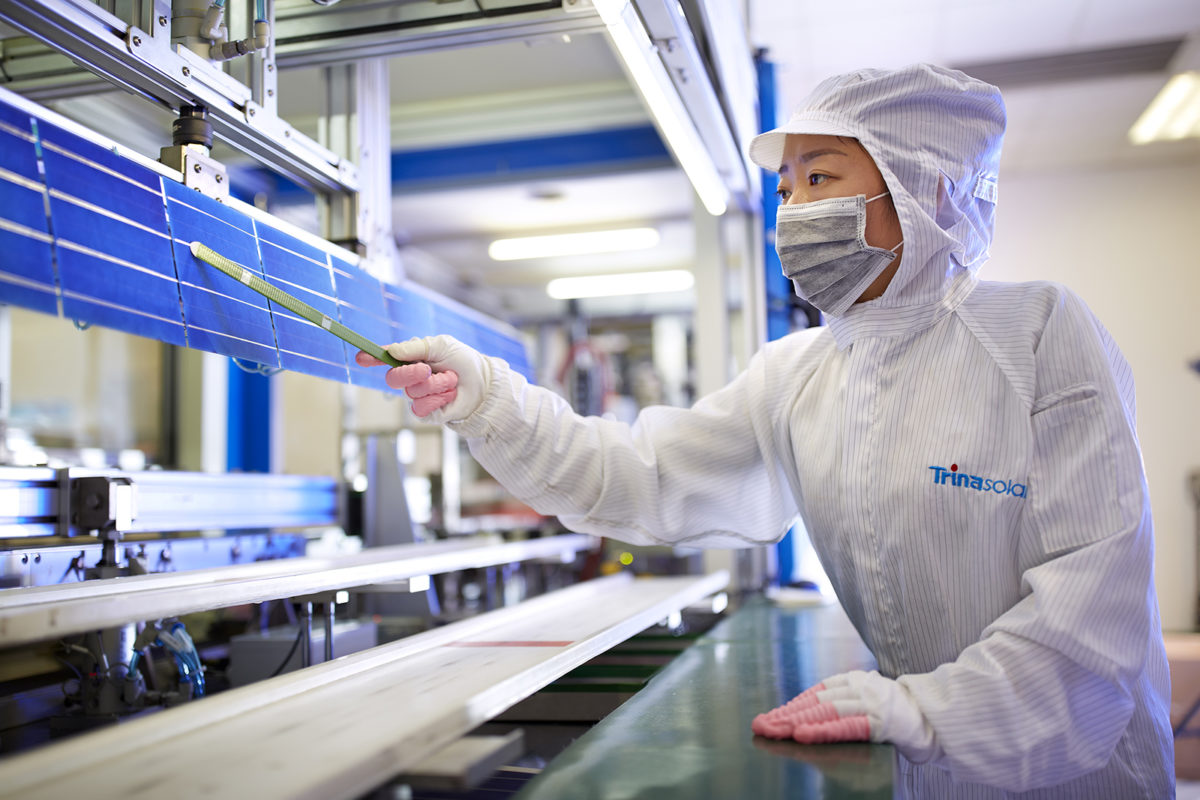Chinese vertically integrated Tier 1 solar company Trina Solar has announced today a new record efficiency of 24.13% for a large-area, n-type monocrystalline silicon (c-Si) Interdigitated Back Contact (IBC) solar cell.
The record is noteworthy because it has been achieved on an industrial-sized area measuring 156 x 156mm2, and has a total measured area of 243.3cm2. The cell efficiency was measured without any aperture, and given that total area efficiencies are always lower than aperture-efficiencies, the 24.13% efficiency surpasses all previous records for IBC cells, Trina said.
“Over the last few years, our R&D team has managed to continuously improve the efficiency of our n-type IBC solar cells, pushing the limits and approaching very closely to the performance of our best small-area laboratory cell developed in collaboration with the Australian National University (ANU) three years ago,” said Pierre Verlinden, Trina Solar’s chief scientist and VP.
Trina’s achievement in 2014 saw the firm partner with ANU to develop a world-record aperture efficiency of 24.37% for a lab-scale, 4cm2 IBC solar cell that was fabricated on an n-type substrate using photolithography patterning.
Popular content
Later that year Trina’s scientists hit 22.94% on a large-area cell, upping that to 23.5% in April 2016. This latest record was set at the company’s State Key Laboratory (SKL) of PV Science and Technology (PVST), and has been independently measured by the Japan Electrical Safety and Environment Technology Laboratories (JET).
Verlinden added that IBC cells are among the most efficient silicon-based solar cells available, and are well suited to high power density solar projects, rather than those that focus on lower LCOE.
“Our IBC cell program has always focused on the development of large-area cells and low-cost industrial processes,” said Verlinden. “Our goal is to insist on technological innovation, and transform as quickly as possible the laboratory technology into commercial production.”
This content is protected by copyright and may not be reused. If you want to cooperate with us and would like to reuse some of our content, please contact: editors@pv-magazine.com.


By submitting this form you agree to pv magazine using your data for the purposes of publishing your comment.
Your personal data will only be disclosed or otherwise transmitted to third parties for the purposes of spam filtering or if this is necessary for technical maintenance of the website. Any other transfer to third parties will not take place unless this is justified on the basis of applicable data protection regulations or if pv magazine is legally obliged to do so.
You may revoke this consent at any time with effect for the future, in which case your personal data will be deleted immediately. Otherwise, your data will be deleted if pv magazine has processed your request or the purpose of data storage is fulfilled.
Further information on data privacy can be found in our Data Protection Policy.